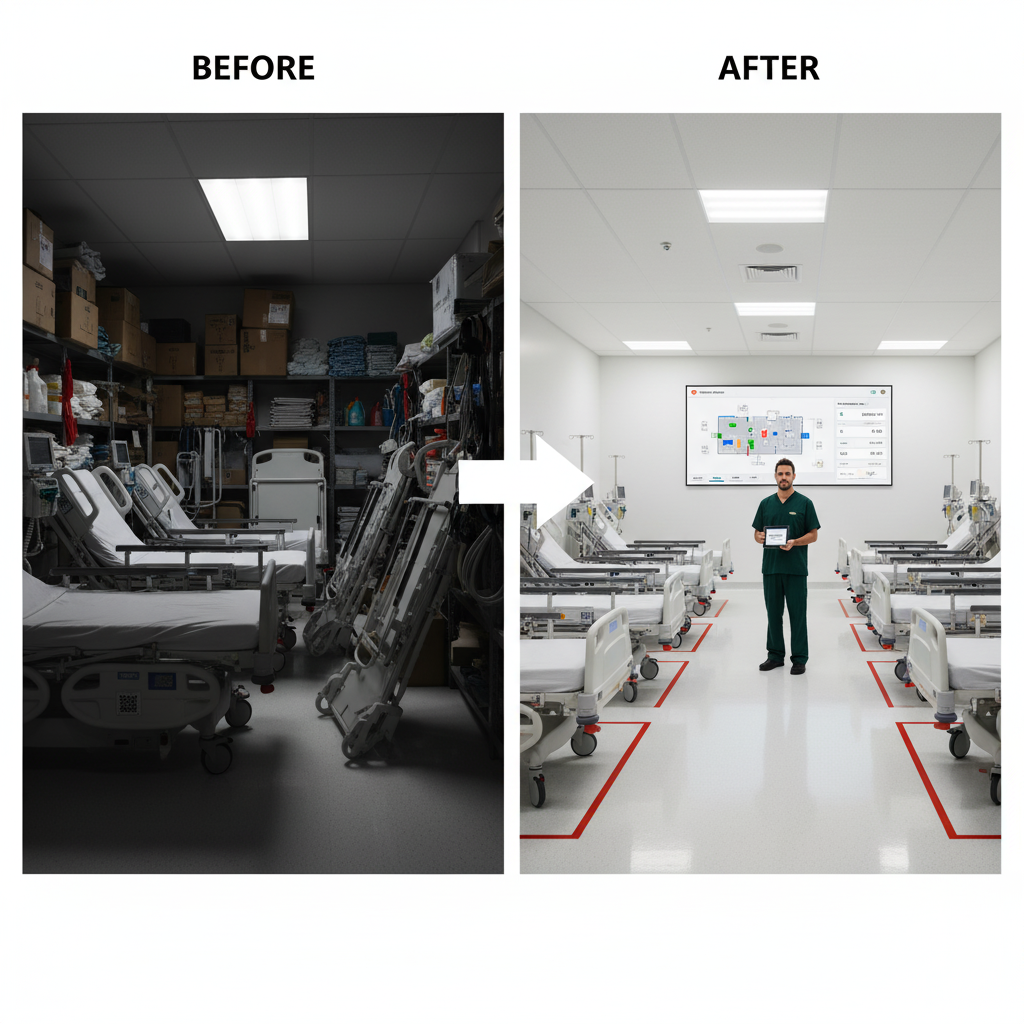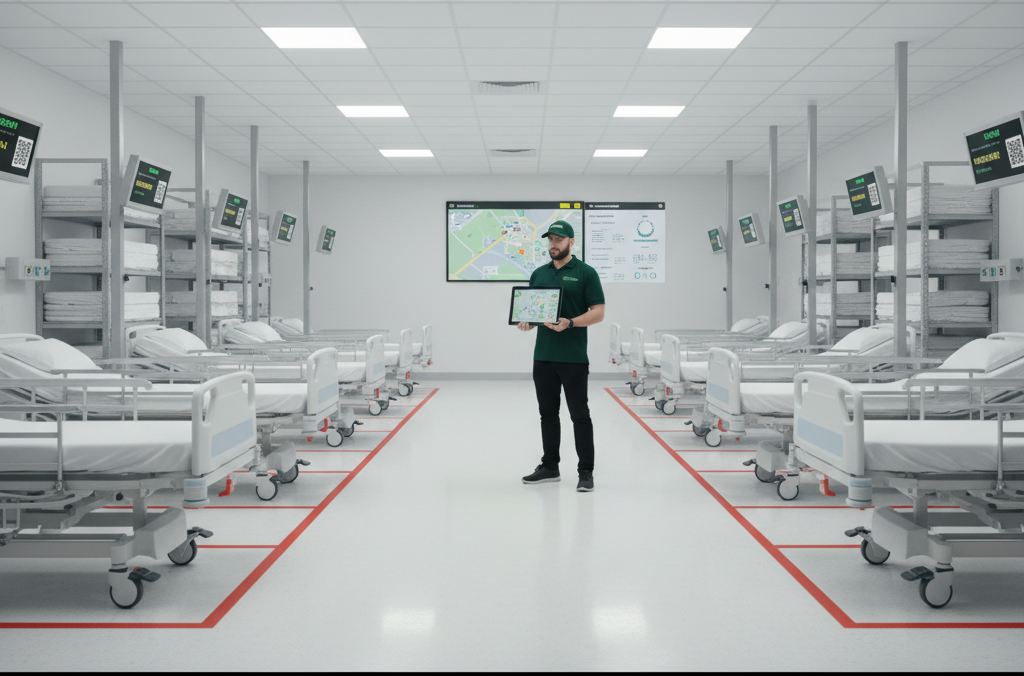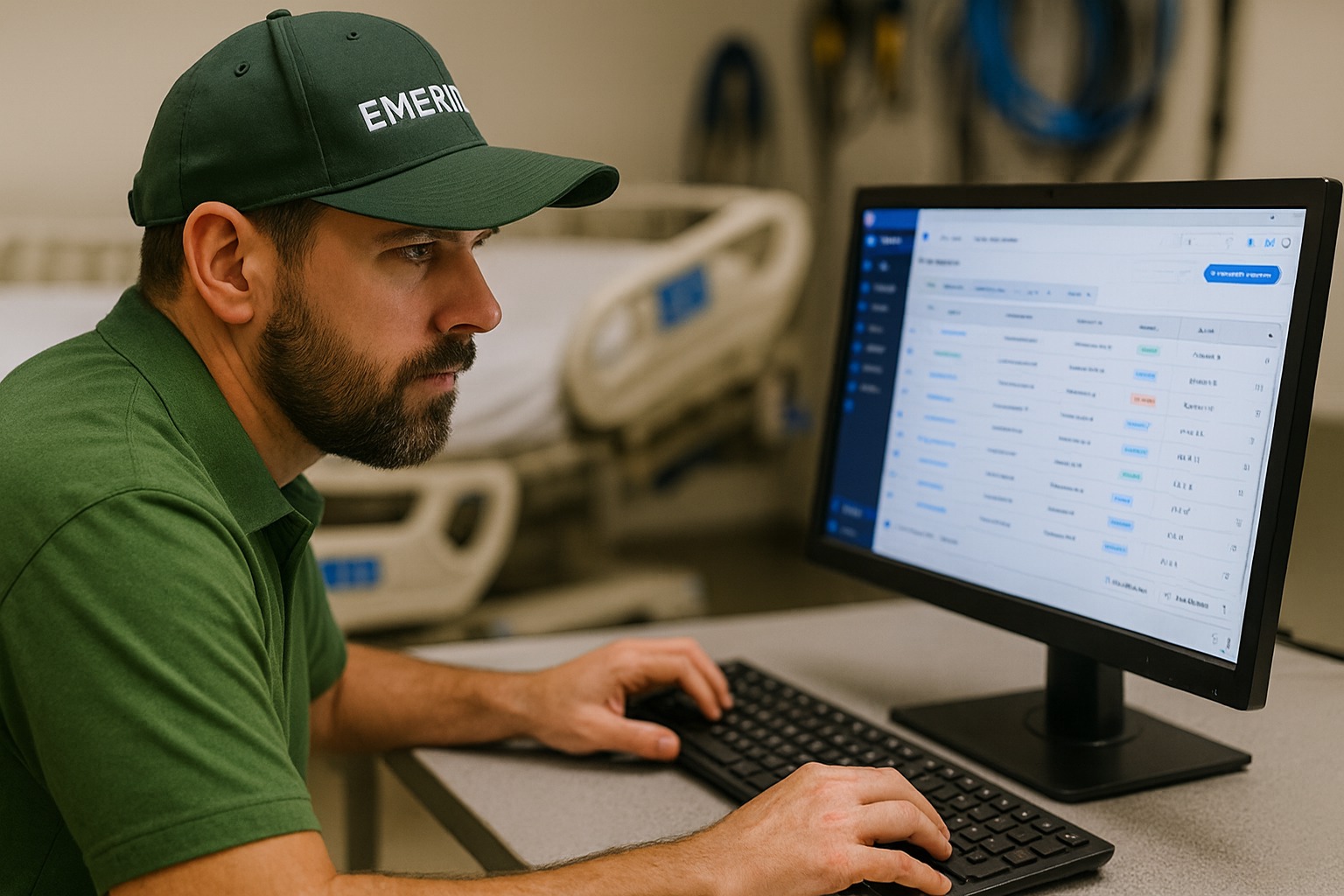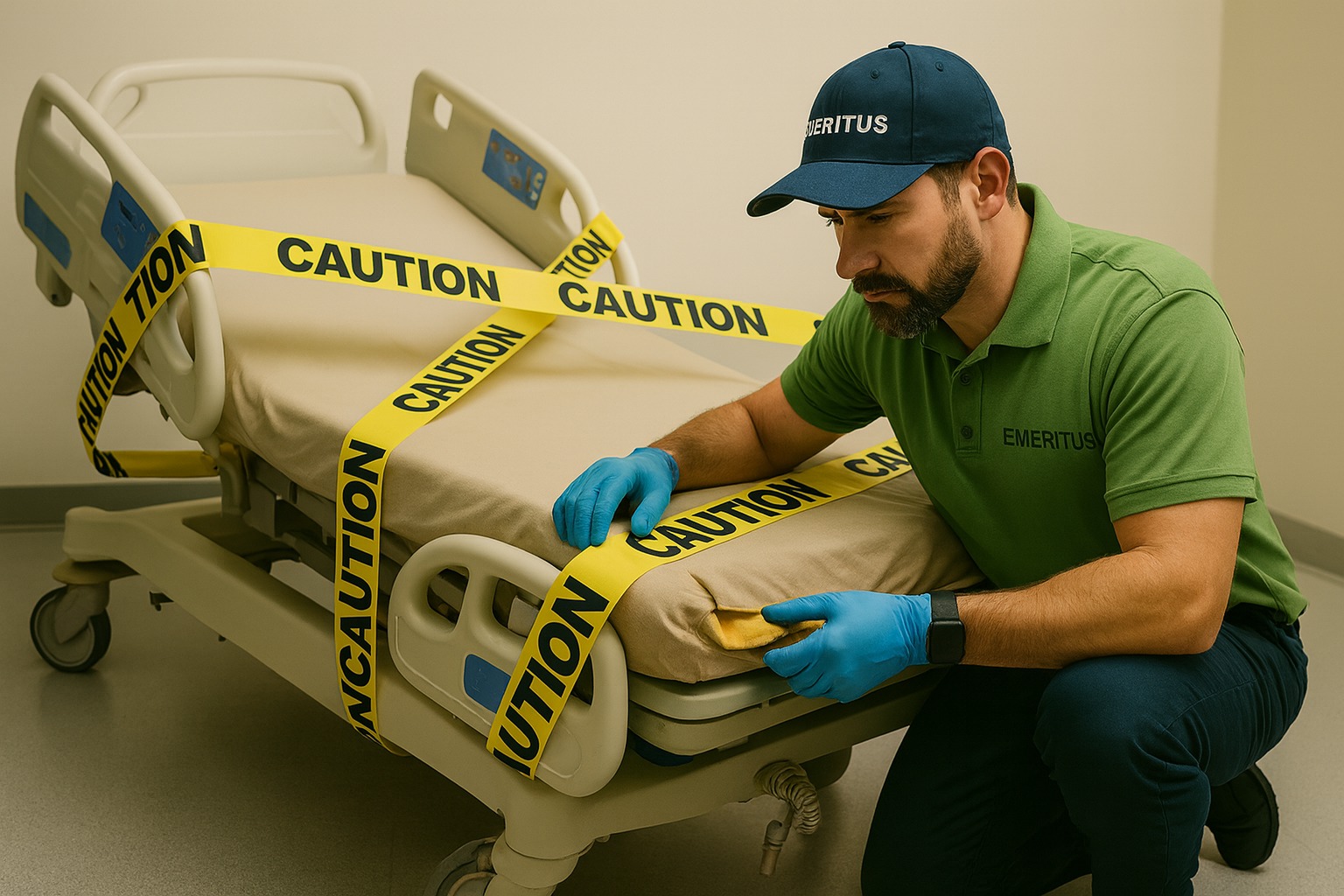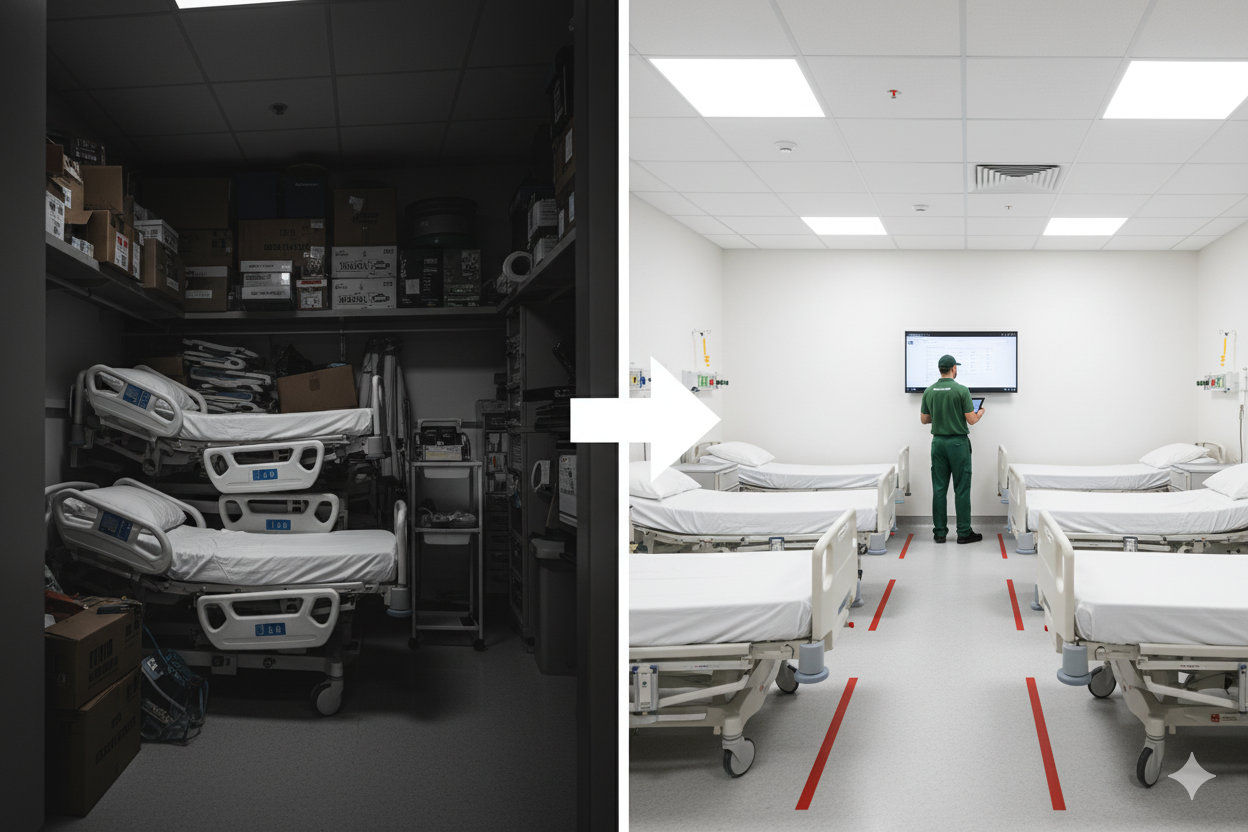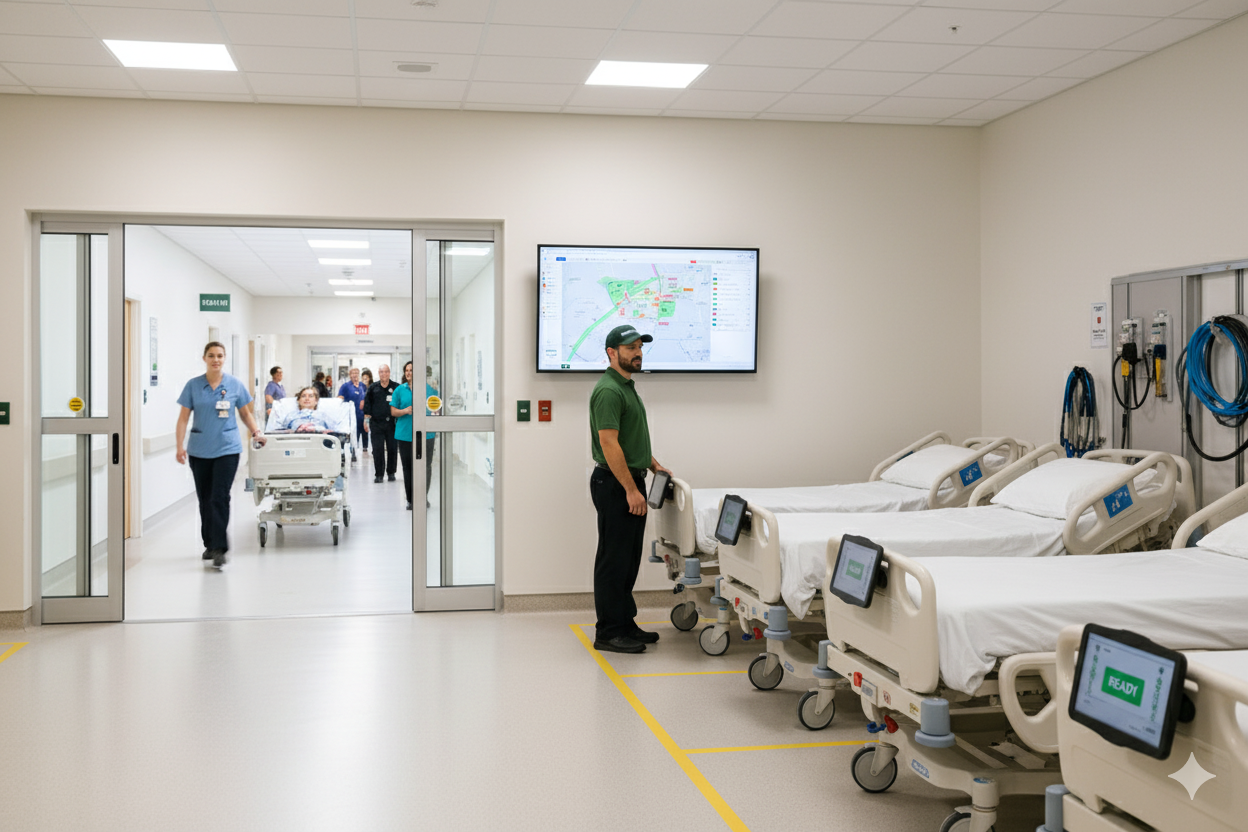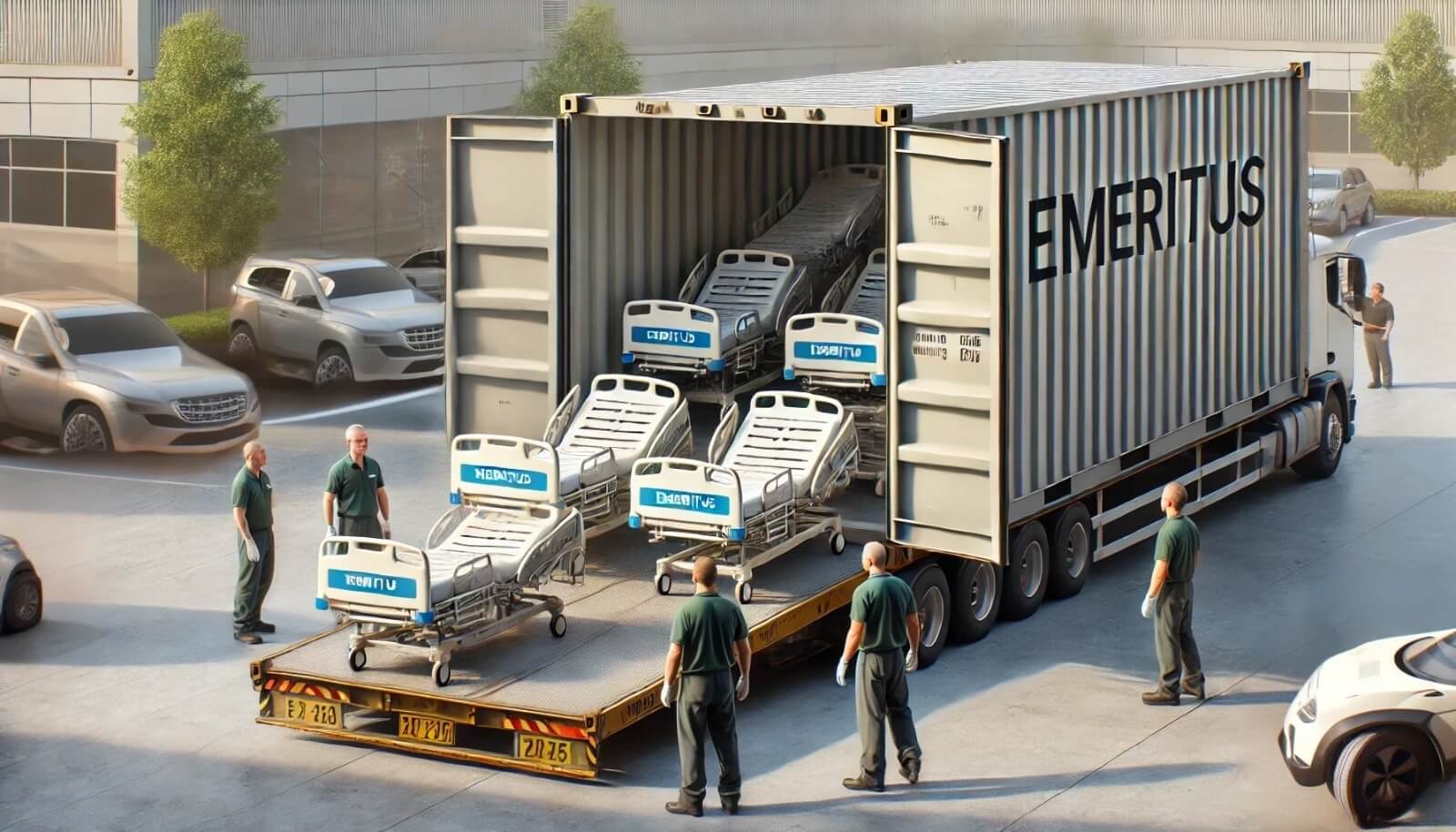
Efficient hospital bed utilization is essential for maintaining smooth patient flow, reducing wait times, and controlling operational costs. However, poorly coordinated bed transport can lead to delays in patient admissions, prolonged equipment downtime, and unnecessary wear and tear on hospital beds and facilities.
At Emeritus, we support hospital transport teams by ensuring beds are efficiently moved to and from the repair shop, maintaining department-specific par levels, training transport teams, and leveraging RTLS (Real-Time Location Systems) to improve bed tracking. These strategic efforts help hospitals maximize bed availability, prevent transport-related damage, and enhance overall operational efficiency.
How Transport Support Impacts Bed Utilization
A hospital bed sitting unused does not necessarily mean it is ready for the next patient. Common transport-related inefficiencies include:
- Beds waiting for repairs but not moved promptly, causing unnecessary downtime.
- Departments running short on beds due to improper inventory management.
- Improper bed transport techniques, leading to damaged beds, walls, and doorways.
- Transport teams struggling to locate available beds, resulting in delays.
By proactively addressing these challenges, hospitals can increase bed availability, improve patient flow, and reduce repair costs.
Our Approach to Supporting Bed Transport Efficiency
1. Moving Beds to and From the Repair Shop
To minimize downtime, we ensure non-functional beds are promptly transported to the repair shop and returned to service as soon as they are fixed. This reduces bed shortages and ensures that all available equipment is in use where it is needed most.
2. Establishing and Maintaining Department-Specific Par Levels
We help hospitals set customized par levels for each department, ensuring that the right number and types of beds are always available. By proactively managing inventory, we prevent bed shortages and overstocking, allowing hospitals to operate efficiently without unnecessary delays.
3. Training Transport Teams to Prevent Damage
Improper bed transport can lead to avoidable damage to both equipment and hospital infrastructure. Our training programs focus on:
- Safe handling techniques to prevent bed frame and caster damage.
- Proper transport procedures to reduce strain on beds and extend their lifespan.
- Best practices for navigating tight spaces to avoid unnecessary wall and doorframe damage.
By educating transport teams, hospitals can prevent costly repairs, extend the life of their beds, and create a safer environment for both staff and patients.
4. Leveraging RTLS for Bed Location Tracking
Our Real-Time Location System (RTLS) support ensures that transport teams can quickly locate available beds without wasting time searching across the hospital. By keeping RTLS tags secured to beds and ensuring batteries are replaced during PM cycles, we help maintain accurate bed tracking, reducing confusion and improving efficiency.
Better Transport Means Better Bed Utilization
By facilitating bed movement, maintaining proper inventory levels, training staff, and supporting RTLS tracking, Emeritus helps hospitals reduce downtime, prevent damage, and streamline bed utilization.
Optimized bed transport doesn’t just reduce delays—it also saves money, improves patient care, and enhances operational efficiency.
Partner with Emeritus today to improve your hospital’s bed transport support and maximize your facility’s efficiency!




